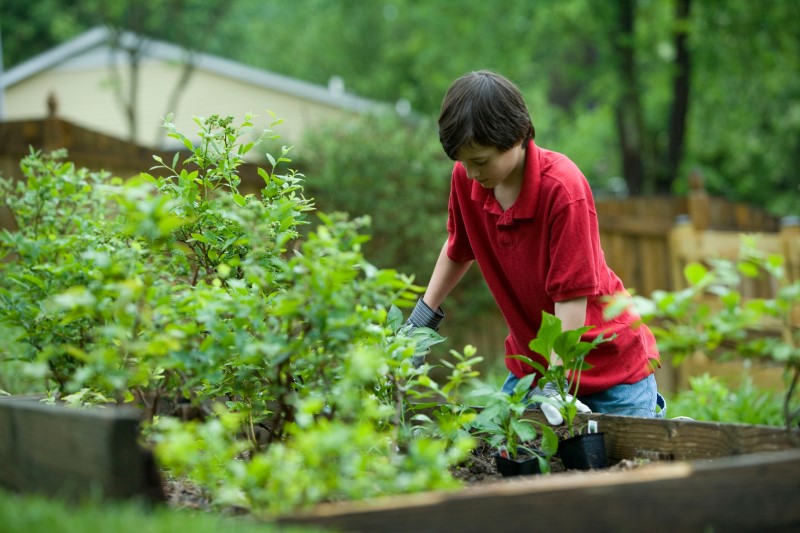Building and Maintaining a School Garden: A Path to Learning, Growth, and Community
A school garden is a powerful educational tool that offers endless opportunities for learning, growth, and community engagement. It serves as an outdoor classroom where students can engage in hands-on experiences, foster a connection to the environment, and learn about sustainability. In this 2000-word blog post, we'll discuss the process of building and maintaining a school garden, explore the numerous benefits, and provide practical tips to ensure a successful and thriving garden.
Getting Started with a School Garden
Building a Team and Gaining Support
The first step in creating a school garden is to build a team of dedicated individuals who share a common vision. This team can include teachers, administrators, parents, and community members. It's essential to gain support from the school administration and involve all stakeholders in the planning process.
Identifying Goals and Objectives
Before starting your garden, identify the goals and objectives you hope to achieve. These could include enhancing academic learning, promoting environmental awareness, or encouraging healthier eating habits. Establishing clear goals will help guide your decisions and ensure the garden's long-term success.
Selecting a Site and Designing the Garden
 Choose a suitable location for your garden, considering factors like sunlight, water access, and visibility. Design the garden with your goals and objectives in mind, incorporating elements such as raised beds, seating areas, and wildlife habitats. Consider the accessibility of the garden for all students and the potential for expansion in the future.
Choose a suitable location for your garden, considering factors like sunlight, water access, and visibility. Design the garden with your goals and objectives in mind, incorporating elements such as raised beds, seating areas, and wildlife habitats. Consider the accessibility of the garden for all students and the potential for expansion in the future.
Securing Funding and Resources
Develop a budget for your garden, accounting for expenses such as soil, plants, tools, and infrastructure. Seek funding and resources from various sources, including school funds, grants, local businesses, and community organizations. Don't forget to explore opportunities for in-kind donations and volunteer labor.
The Educational Benefits of a School Garden
Enhancing Academic Learning
A school garden provides a hands-on, experiential learning environment where students can apply their classroom knowledge in real-world situations. Gardening activities can be integrated into various subjects, including science, math, language arts, and social studies. This approach helps students retain information and develop a deeper understanding of the concepts being taught.
Promoting Environmental Stewardship
School gardens offer students the opportunity to learn about the environment and the importance of sustainability. Through gardening, they'll gain a greater appreciation for natural resources, understand the impact of their choices, and develop a sense of responsibility for the planet.
Encouraging Healthy Eating Habits

By participating in the planting, growing, and harvesting of fruits and vegetables, students develop a connection to their food and are more likely to try new, healthy options. School gardens can also serve as the foundation for nutrition education, helping students make informed choices about their diets.
The Social and Emotional Benefits of a School Garden
Fostering a Sense of Community and Collaboration
School gardens bring together students, teachers, and community members, fostering a sense of community and collaboration. They provide opportunities for teamwork, communication, and shared responsibility, helping students develop essential social skills.
Building Confidence and Self-Esteem
As students witness the fruits of their labor, they develop a sense of accomplishment and pride in their work. This boosts their confidence and self-esteem, empowering them to take on new challenges and believe in their abilities.
Developing Resilience and Coping Skills
Gardening teaches students about patience, perseverance, and adaptability. They'll learn to cope with setbacks, such as weather challenges or pest problems, and develop resilience in the face of adversity. These skills are invaluable in all aspects of life, both in and outside of the classroom.
Engaging the Community and Enhancing School Pride
Involving Parents and Community Members
A school garden offers numerous opportunities for parent and community involvement. From volunteering in the garden to participating in workshops and events, these collaborations strengthen the sense of community and support for the garden project.
Creating Opportunities for Service Learning
School gardens provide an ideal setting for service learning, where students can engage in meaningful, hands-on projects that benefit their community. This could include growing and donating produce to local food banks, creating wildlife habitats, or hosting educational workshops.
Enhancing School Pride and Aesthetics
A well-maintained school garden can significantly improve the overall appearance of the school grounds, fostering a sense of pride and belonging among students, staff, and the community. This pride can translate into improved school spirit and a stronger connection to the school environment.
Tips for Maintaining a Thriving School Garden
Establish a Garden Committee
To ensure the ongoing success of your school garden, establish a garden committee with representatives from various stakeholder groups. This committee will be responsible for overseeing garden maintenance, coordinating volunteer efforts, and planning future initiatives.
Create a Maintenance Schedule
Develop a schedule for garden maintenance tasks, such as watering, weeding, and harvesting. Assign responsibilities to students, teachers, and volunteers, and consider integrating garden chores into the curriculum as learning opportunities.
Plan for Seasonal and Year-Round Use
Maximize the educational potential of your school garden by planning for seasonal and year-round use. Incorporate plants with various growing seasons, create indoor gardening projects, and host workshops and events throughout the year to maintain interest and engagement.
Offer Professional Development for Teachers
Provide training and professional development opportunities for teachers to help them effectively integrate the garden into their curriculum. This will ensure that the garden remains a valuable educational resource and receives ongoing support from the school community.
Continuously Evaluate and Evolve
Regularly assess the effectiveness of your school garden in meeting its goals and objectives. Gather feedback from students, teachers, and community members, and use this information to make improvements and adapt the garden to the changing needs of your school community.
Conclusion
Building and maintaining a school garden is a rewarding endeavor that offers countless benefits for students, teachers, and the community. From enhancing academic learning and promoting environmental stewardship to fostering social and emotional growth and engaging the community, a school garden is a powerful tool for holistic education. By following the tips and strategies outlined in this blog post, you'll be well on your way to creating a thriving, vibrant school garden that will inspire and nurture generations of learners.
back to KidZone Science
